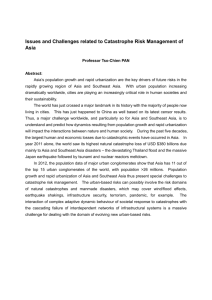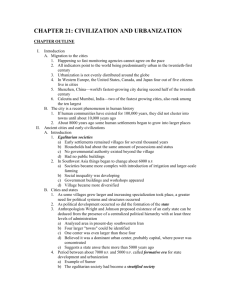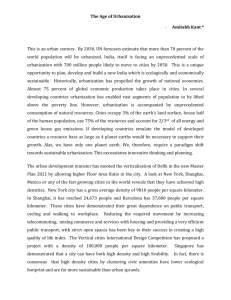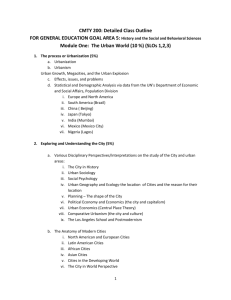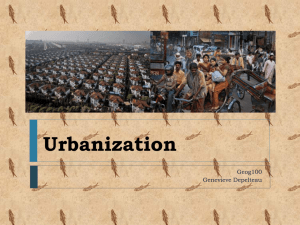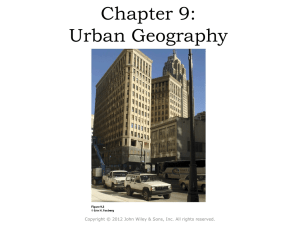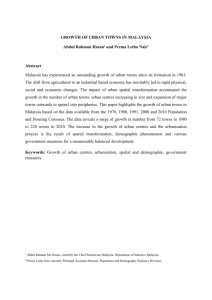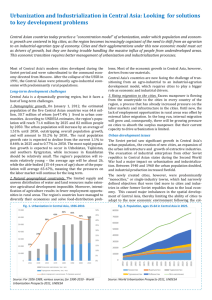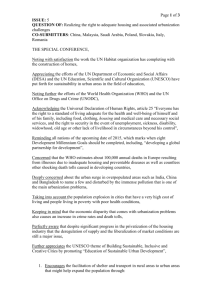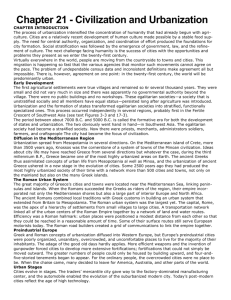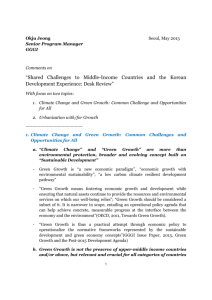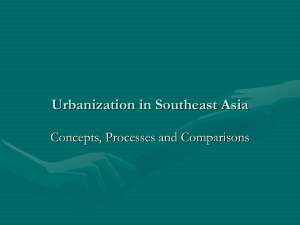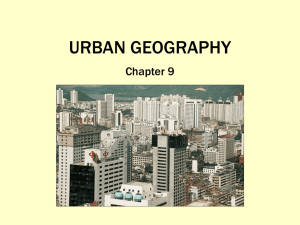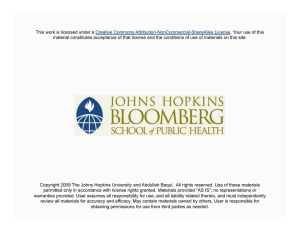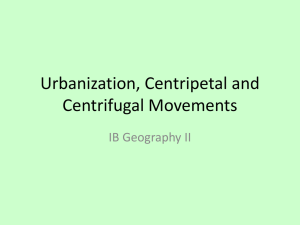Chapter 15
advertisement
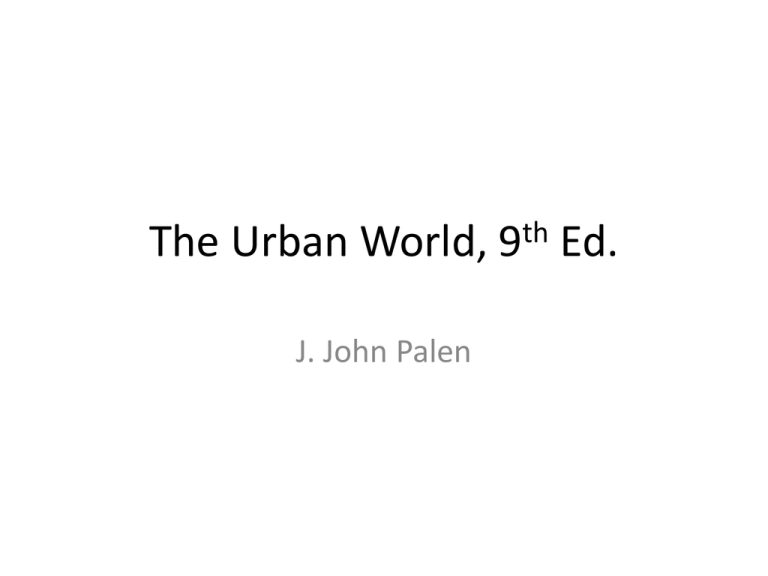
The Urban World, J. John Palen th 9 Ed. Chapter 15: Asian Urban Patterns • • • • • • Introduction India China Japan Southeast Asia Summary Introduction • Asian Cities – Patterns of urbanization have different historical roots and have developed in dissimilar cultures – As of 2010 Asia’s population was almost twothirds of the world population – 43 percent of the population of Asia is Urban • Indigenous Cities – Indigenous pre-industrial Asian cities originally were predominantly political, cultural, and religious center, and only secondarily economic centers Figure 15.1 Map of Asia • Colonial Background Cities – Western-type city organization was imported into Asia, mostly during the 19th century, by Europeans seeking trade – Originally established as small trading sites, perhaps with a small fort for protections, these cities are now among the largest in the world India • Only 29 percent urban, but that is 29 percent of 1.2 billion people • Mumbai (Bombay) – The heart of India’s financial and industrial life and the center of the nation’s large and colorful film industry – 20 million people in 2010 – The social fabric threatens to unravel because of the gap between the super rich and the super poor has become sharper and more painful – Half of the Indian population makes less than $2 a day • Kolkata (Calcutta) – The opposite from Mumbai, both geographically and emotionally – City population of 6 million and the overall metro-area population of 16 million – Has been run by a Marxist local government for decades – Three-quarters of the population is housed in crowded tenements and bustee huts – Much of the city is in a state of decay, including municipalities and housing – Remains one of the world’s more vital cities • Prognosis – India’s population will soon surpass China’s as the world’s largest – The prognosis for economic growth is strong – Economic growth thus far benefits the elite and the middle class far more than the masses – Questions of environmental quality receive little attention China • Currently the world’s economic growth machine • Treaty Ports • The first modern manufacturing and industrial cities of China were the Western-dominated treaty ports • Urbanization Policies • China’s policy under Mao was resolutely anti-urban • Today cities are the economic engines driving the country’s development • Forced Movement from Cities • Urban Chinese youth were persuaded to “volunteer” to resettle permanently in rural villages • Today anti-urban policies have run up against economic reality • Economically, China is now essentially a freeenterprise system • Rural to Urban Migration • A major effort is being made to relocate industries to outlying areas in order to stem the potential flood of rural-to-urban migrants • Mechanization of farming will eventually displace 500 million people; resulting in the largest movement in human history • Unsanctioned migrants do nor have access to services • Economic Boom • Economic reforms occurred first in Special Economic Zones set up in the south • The southern zones now boast a considerable prosperity • Shanghai • China’s largest city at 16.7 million • Allowed to deteriorate after the communist takeover, Shanghai is now rapidly expanding • The area of Pudong is now the financial capital of China • Despite rising pollution, Shanghai is seeking to become China’s symbol of sustainable growth • Beijing • China’s second largest city with 12 million residents • Home of the political leaders and bureaucrats • Booming economically; workers paid four time the national average • Among the most polluted regions of the work • Hong Kong – Reverted to China in 1997 – Most noted for its laissez-faire economic structure – Its population density is the highest in the world – Developing several new towns as independent entities, yet they cannot fully meet their own needs – The economy is the eighth-largest trading entity in the world – Political future still unsure Japan • Extent of Urbanization • Today Japan is 86 percent urban, a percentage higher than North America • Overall density of more than 300 persons/squared kilometer and 45 percent of population occupying only 1 percent of the land area • Current Patterns • Urbanization and industrialization similar to Western countries • Previously ignored public works are now being invested in • Possesses great resources • Tokyo: the world’s most populous metro area – Housing – Exorbitant land costs have resulted in structures being built wall to wall up to the lot lines – Little open public land – Nationally only half the homes are connected to sewage systems – Due to housing costs, commutes are usually long – Transportation – Japan’s subway and train system are among the world’s finest – The world’s most congested metro-area – The nation has some 55 million bicycles – Crime – One of the world’s safest cities and one of the world’s lowest crime rates • Planning • During the final years of WW II much of Tokyo was leveled • The opportunity to rebuild did not create wider streets, open space, or reasonable lot sizes • Planned New Towns • Public housing, in new towns or elsewhere, is built for middle-class rather than low-income groups • Suburbanization • Earthquakes have encouraged decentralization • High land costs resulted in suburbanization Southeast Asia • General Patterns – Most major cities a product of European colonial expansion – Cities are relatively new • Singapore – Atypical of Southeast Asia – Even with a total absence of natural resources, the country is prosperous – 5 million persons in 225 square miles – Replacing all housing with high-rise apartments – Singaporeans enjoy one of the highest standards of living in the world • Other Cities – Jakarta, Indonesia, has 10 million people – Bangkok, Thailand, officially, has 6 million people, but it is actually twice that number – Kuala Lumpur, Malaysia, the national capital, has grown with more speed than planning – Seoul, South Korea, is efficient rather than comfortable

